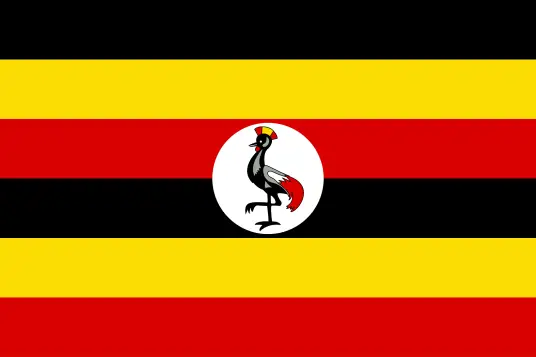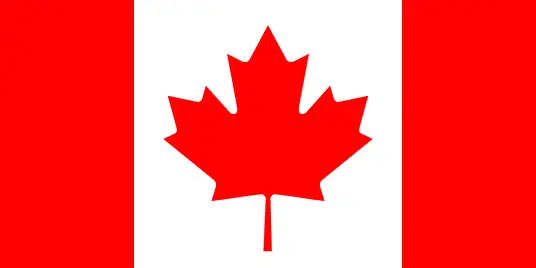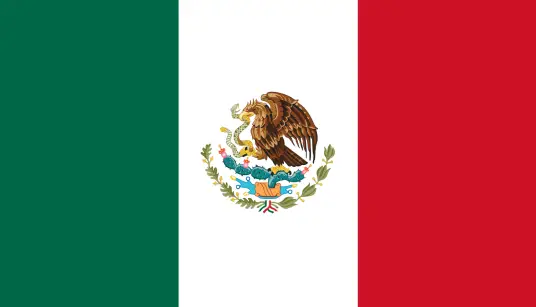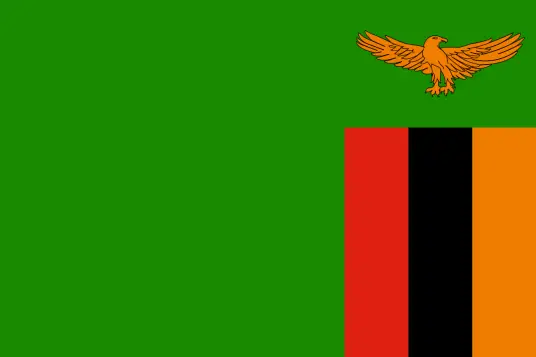
-
 Español
Español
-
 Portugues
Portugues
-
 Pусский
Pусский
-
 Français
Français
-
 Deutsch
Deutsch
-
 日本語
日本語
-
 한국어
한국어
-
 العربية
العربية
-
 Italiano
Italiano
-
 Nederlands
Nederlands
-
 Ελληνικά
Ελληνικά
-
 Svenska
Svenska
-
 Polski
Polski
-
 ไทย
ไทย
-
 Türk dili
Türk dili
-
 हिन्दी
हिन्दी
-
 Indonesia
Indonesia
-
 Melayu
Melayu
-
 Tiếng Việt
Tiếng Việt
-
 中文
中文
-
 dansk
dansk
-
 Magyar
Magyar
-
 қазақ
қазақ
-
 বাংলা
বাংলা
-
 עִברִית
עִברִית
-
 čeština
čeština
-
 Soomaali
Soomaali
-
 မြန်မာ
မြန်မာ
-
 فارسی
فارسی
-
 українська
українська
-
 norsk
norsk
-
 Gaeilge
Gaeilge
-
 беларускі
беларускі
-
 Română
Română
-
 ພາສາລາວ
ພາສາລາວ
-
 Filipino
Filipino
-
 lietuvių
lietuvių
-
 Cymraeg
Cymraeg
-
 македонски
македонски
-
 Suomalainen
Suomalainen
-
 slovenský
slovenský
-
 o'zbek
o'zbek
-
 اردو
اردو
-
 հայերեն
հայերեն
-
 Igbo
Igbo
-
 български
български
-
 سنڌي
سنڌي
-
 Shona
Shona
-
 සිංහල
සිංහල
-
 Hrvatski
Hrvatski
-
 íslenskur
íslenskur
-
 galego
galego
-
 català
català
-
 Zulu South Africa
Zulu South Africa
-
 Afrikaans isiXhosa
Afrikaans isiXhosa
-
 ಕನ್ನಡ
ಕನ್ನಡ
-
 lëtzebuergesch
lëtzebuergesch
-
 Indonésia Sunda
Indonésia Sunda
-
 basa jawa
basa jawa
-
 ગુજરાતી
ગુજરાતી
-
 Кыргызча
Кыргызча
-
 тоҷикӣ
тоҷикӣ
-
 Србија
Србија
-
 Twi
Twi
-
 Hawaii
Hawaii
-
 Cebu
Cebu
-
 नेपाल
नेपाल
-
 euskara
euskara
-
 Kurdî
Kurdî
-
 frissi
frissi
-
 יידיש
יידיש
-
 latvija
latvija
-
 slovenija
slovenija
-
 kiswahili
kiswahili
-
 ਪੰਜਾਬ
ਪੰਜਾਬ
-
 پښتو
پښتو
-
 საქართველოს
საქართველოს
-
 hua moni
hua moni
-
 bosna
bosna
-
 తెలుగు
తెలుగు
-
 தமிழ்
தமிழ்
-
 Kreyòl ayisyen
Kreyòl ayisyen
-
 Eesti
Eesti
-
 Corsica
Corsica
-
 Yoruba
Yoruba
-
 Gàidhlig na h-Alba
Gàidhlig na h-Alba
-
 Samoa
Samoa
-
 Монгол
Монгол
-
 Hausa
Hausa
-
 Azərbaycan
Azərbaycan
-
 አማራ
አማራ
-
 Shqipëria
Shqipëria
-
 Malagasy
Malagasy
-
 मराठी
मराठी
-
 മലയാളം
മലയാളം
-
 Malta
Malta
-
 ខ្មែរ
ខ្មែរ
-
 Chicheva
Chicheva
-
 中文(繁体)
中文(繁体)
-
 ଓଡିଆ
ଓଡିଆ
-
 Setswana
Setswana
-
 Afrikaans
Afrikaans
-
 Aymara
Aymara
-
 Башҡорт
Башҡорт
-
 Türkmenler
Türkmenler
-
 ትግሪኛ
ትግሪኛ
-
 Afaan Oromoo
Afaan Oromoo
-
 অসমীয়া
অসমীয়া
-
 Kinyarwanda
Kinyarwanda
-
 Ilocano
Ilocano
-
 Wolof
Wolof
-
 अवधी
अवधी
-
 Oluganda
Oluganda
-
 Bikol
Bikol
-
 Fulɓe
Fulɓe
-
 Kikongo
Kikongo
-
 Sango
Sango
-
 ދިވެހި
ދިވެހި
-
 Lingala
Lingala
-
 मैथिली
मैथिली
-
 Tsonga
Tsonga
-
 ꯃꯦꯏ ꯊꯥꯏ꯫
ꯃꯦꯏ ꯊꯥꯏ꯫
-
 brezhoneg
brezhoneg
-
 Furlan
Furlan
-
 नेवा
नेवा
-
 རྫོང་ཁ
རྫོང་ཁ
-
 Santali
Santali
-
 Аҧсуа
Аҧсуа
-
 Нохчийн
Нохчийн
-
 Чӑваш
Чӑваш
-
 Татар
Татар
-
 Batak Karo
Batak Karo
-
 دری
دری
-
 Diura
Diura
-
 Fengyu
Fengyu
-
 Eʋegbe
Eʋegbe
-
 Iban
Iban
-
 Fiji
Fiji
-
 Tonga
Tonga
-
 Inuktitut
Inuktitut
-
 Nahuatl
Nahuatl
-
 maaya yucatec
maaya yucatec
-
 Runasimi
Runasimi
-
 guarani
guarani
-
 Qafar
Qafar
-
 Acholi
Acholi
-
 Dinka
Dinka
-
 Luo
Luo
-
 Lundi
Lundi
-
 isiNdebele
isiNdebele
-
 Tshivenḓa
Tshivenḓa
-
 Sesotho sa Leboa
Sesotho sa Leboa
-
 Sesotho sa Borwa
Sesotho sa Borwa
-
 Ndumbe
Ndumbe
-
 Papuan Pidgin
Papuan Pidgin
-
 Rromani ćhib
Rromani ćhib
-
 Thok Nath
Thok Nath
yuxiatugong@163.com
+86 18353494641
-
 Español
Español
-
 Portugues
Portugues
-
 Pусский
Pусский
-
 Français
Français
-
 Deutsch
Deutsch
-
 日本語
日本語
-
 한국어
한국어
-
 العربية
العربية
-
 Italiano
Italiano
-
 Nederlands
Nederlands
-
 Ελληνικά
Ελληνικά
-
 Svenska
Svenska
-
 Polski
Polski
-
 ไทย
ไทย
-
 Türk dili
Türk dili
-
 हिन्दी
हिन्दी
-
 Indonesia
Indonesia
-
 Melayu
Melayu
-
 Tiếng Việt
Tiếng Việt
-
 中文
中文
-
 dansk
dansk
-
 Magyar
Magyar
-
 қазақ
қазақ
-
 বাংলা
বাংলা
-
 עִברִית
עִברִית
-
 čeština
čeština
-
 Soomaali
Soomaali
-
 မြန်မာ
မြန်မာ
-
 فارسی
فارسی
-
 українська
українська
-
 norsk
norsk
-
 Gaeilge
Gaeilge
-
 беларускі
беларускі
-
 Română
Română
-
 ພາສາລາວ
ພາສາລາວ
-
 Filipino
Filipino
-
 lietuvių
lietuvių
-
 Cymraeg
Cymraeg
-
 македонски
македонски
-
 Suomalainen
Suomalainen
-
 slovenský
slovenský
-
 o'zbek
o'zbek
-
 اردو
اردو
-
 հայերեն
հայերեն
-
 Igbo
Igbo
-
 български
български
-
 سنڌي
سنڌي
-
 Shona
Shona
-
 සිංහල
සිංහල
-
 Hrvatski
Hrvatski
-
 íslenskur
íslenskur
-
 galego
galego
-
 català
català
-
 Zulu South Africa
Zulu South Africa
-
 Afrikaans isiXhosa
Afrikaans isiXhosa
-
 ಕನ್ನಡ
ಕನ್ನಡ
-
 lëtzebuergesch
lëtzebuergesch
-
 Indonésia Sunda
Indonésia Sunda
-
 basa jawa
basa jawa
-
 ગુજરાતી
ગુજરાતી
-
 Кыргызча
Кыргызча
-
 тоҷикӣ
тоҷикӣ
-
 Србија
Србија
-
 Twi
Twi
-
 Hawaii
Hawaii
-
 Cebu
Cebu
-
 नेपाल
नेपाल
-
 euskara
euskara
-
 Kurdî
Kurdî
-
 frissi
frissi
-
 יידיש
יידיש
-
 latvija
latvija
-
 slovenija
slovenija
-
 kiswahili
kiswahili
-
 ਪੰਜਾਬ
ਪੰਜਾਬ
-
 پښتو
پښتو
-
 საქართველოს
საქართველოს
-
 hua moni
hua moni
-
 bosna
bosna
-
 తెలుగు
తెలుగు
-
 தமிழ்
தமிழ்
-
 Kreyòl ayisyen
Kreyòl ayisyen
-
 Eesti
Eesti
-
 Corsica
Corsica
-
 Yoruba
Yoruba
-
 Gàidhlig na h-Alba
Gàidhlig na h-Alba
-
 Samoa
Samoa
-
 Монгол
Монгол
-
 Hausa
Hausa
-
 Azərbaycan
Azərbaycan
-
 አማራ
አማራ
-
 Shqipëria
Shqipëria
-
 Malagasy
Malagasy
-
 मराठी
मराठी
-
 മലയാളം
മലയാളം
-
 Malta
Malta
-
 ខ្មែរ
ខ្មែរ
-
 Chicheva
Chicheva
-
 中文(繁体)
中文(繁体)
-
 ଓଡିଆ
ଓଡିଆ
-
 Setswana
Setswana
-
 Afrikaans
Afrikaans
-
 Aymara
Aymara
-
 Башҡорт
Башҡорт
-
 Türkmenler
Türkmenler
-
 ትግሪኛ
ትግሪኛ
-
 Afaan Oromoo
Afaan Oromoo
-
 অসমীয়া
অসমীয়া
-
 Kinyarwanda
Kinyarwanda
-
 Ilocano
Ilocano
-
 Wolof
Wolof
-
 अवधी
अवधी
-
 Oluganda
Oluganda
-
 Bikol
Bikol
-
 Fulɓe
Fulɓe
-
 Kikongo
Kikongo
-
 Sango
Sango
-
 ދިވެހި
ދިވެހި
-
 Lingala
Lingala
-
 मैथिली
मैथिली
-
 Tsonga
Tsonga
-
 ꯃꯦꯏ ꯊꯥꯏ꯫
ꯃꯦꯏ ꯊꯥꯏ꯫
-
 brezhoneg
brezhoneg
-
 Furlan
Furlan
-
 नेवा
नेवा
-
 རྫོང་ཁ
རྫོང་ཁ
-
 Santali
Santali
-
 Аҧсуа
Аҧсуа
-
 Нохчийн
Нохчийн
-
 Чӑваш
Чӑваш
-
 Татар
Татар
-
 Batak Karo
Batak Karo
-
 دری
دری
-
 Diura
Diura
-
 Fengyu
Fengyu
-
 Eʋegbe
Eʋegbe
-
 Iban
Iban
-
 Fiji
Fiji
-
 Tonga
Tonga
-
 Inuktitut
Inuktitut
-
 Nahuatl
Nahuatl
-
 maaya yucatec
maaya yucatec
-
 Runasimi
Runasimi
-
 guarani
guarani
-
 Qafar
Qafar
-
 Acholi
Acholi
-
 Dinka
Dinka
-
 Luo
Luo
-
 Lundi
Lundi
-
 isiNdebele
isiNdebele
-
 Tshivenḓa
Tshivenḓa
-
 Sesotho sa Leboa
Sesotho sa Leboa
-
 Sesotho sa Borwa
Sesotho sa Borwa
-
 Ndumbe
Ndumbe
-
 Papuan Pidgin
Papuan Pidgin
-
 Rromani ćhib
Rromani ćhib
-
 Thok Nath
Thok Nath

News Center
News Center
HOT PRODUCT
Drainage Geotextile Material for Subgrade and French Drains
2025-10-18 07:56:44

Drainage Geotextile Material for Subgrade and French Drains
Introduction
Drainage geotextiles play a crucial role in civil engineering and construction projects, particularly in subgrade stabilization and French drain systems. These permeable fabrics are designed to enhance soil filtration, separation, and drainage while preventing clogging and erosion. This paper explores the properties, functions, and applications of drainage geotextiles in subgrade and French drain projects, along with material selection criteria and installation best practices.
1. What is Drainage Geotextile?
Geotextiles are synthetic fabrics made from polymers such as polypropylene or polyester. They are classified into woven, non-woven, and knitted types, each suited for different applications. Drainage geotextiles are primarily non-woven due to their high permeability and filtration efficiency.
Key Properties of Drainage Geotextiles
- Permeability: Allows water to pass through while retaining soil particles.
- Filtration Efficiency: Prevents fine soil migration while maintaining flow.
- Durability: Resistant to UV degradation, chemical exposure, and biological factors.
- Tensile Strength: Withstands mechanical stresses during installation and service life.
- Puncture Resistance: Protects against sharp aggregates and construction damage.
2. Role of Geotextiles in Subgrade Drainage
Subgrade drainage is essential for maintaining the structural integrity of roads, railways, and pavements. Poor drainage can lead to water accumulation, weakening the subgrade and causing premature failure.
Functions of Geotextiles in Subgrade Drainage
1. Separation: Prevents intermixing of subgrade soil and aggregate layers.
2. Filtration: Allows water to drain while retaining fine soil particles.
3. Reinforcement: Improves load distribution and reduces rutting.
4. Erosion Control: Minimizes soil loss due to water flow.
Installation Guidelines for Subgrade Drainage
1. Site Preparation: Clear debris, level the subgrade, and compact if necessary.
2. Geotextile Placement: Roll out the fabric with sufficient overlap (typically 12-18 inches).
3. Aggregate Placement: Add a drainage layer (e.g., gravel) over the geotextile.
4. Compaction: Ensure proper compaction to avoid geotextile damage.
5. Final Layer: Place the pavement or structural layer over the drainage system.
3. Geotextiles in French Drains
French drains are subsurface drainage systems designed to redirect water away from structures. They consist of a perforated pipe surrounded by gravel and wrapped in geotextile to prevent clogging.
Functions of Geotextiles in French Drains
1. Filtration: Keeps soil out of the gravel and pipe while allowing water flow.
2. Clogging Prevention: Extends the system’s lifespan by maintaining permeability.
3. Structural Support: Reinforces the drain against shifting soils.
Installation Steps for French Drains with Geotextile
1. Trench Excavation: Dig a trench with a slight slope (1% minimum) for water flow.
2. Geotextile Lining: Lay the fabric along the trench walls and base.
3. Gravel Placement: Fill the trench with clean, coarse aggregate (e.g., ¾-inch gravel).
4. Perforated Pipe Installation: Place the pipe at the bottom of the trench.
5. Geotextile Wrapping: Fold the excess fabric over the gravel to encase the drain.
6. Backfilling: Cover with soil or topsoil to complete the installation.
4. Material Selection Criteria
Choosing the right geotextile depends on project requirements, soil conditions, and hydraulic performance.
Key Selection Factors
- Soil Type: Fine-grained soils require tighter filtration properties.
- Hydraulic Conditions: High water flow demands higher permeability.
- Load Requirements: Heavy traffic areas need high-strength geotextiles.
- Environmental Exposure: UV resistance is crucial for exposed applications.
Common Geotextile Types for Drainage
1. Non-Woven Geotextiles: Best for filtration and separation (common in French drains).
2. Woven Geotextiles: Higher strength but lower permeability (used in reinforcement).
3. Composite Geotextiles: Combine filtration and reinforcement properties.
5. Benefits of Using Geotextiles in Drainage Systems
- Extended Lifespan: Reduces maintenance by preventing clogging.
- Cost-Effectiveness: Minimizes aggregate use and construction time.
- Environmental Protection: Controls erosion and sedimentation.
- Improved Performance: Enhances drainage efficiency and structural stability.
6. Challenges and Mitigation Strategies
- Clogging Risk: Use appropriate geotextile pore sizes based on soil gradation.
- Installation Damage: Select durable geotextiles and follow proper handling procedures.
- Chemical Degradation: Choose chemically resistant polymers for harsh environments.
7. Case Studies and Practical Applications
- Road Construction: Geotextiles in subgrade drainage improve pavement durability.
- Landscaping: French drains with geotextiles prevent waterlogging in gardens.
- Retaining Walls: Geotextile-wrapped drains reduce hydrostatic pressure.
8. Future Trends in Drainage Geotextiles
- Sustainable Materials: Biodegradable and recycled geotextiles.
- Smart Geotextiles: Embedded sensors for real-time drainage monitoring.
- Advanced Manufacturing: 3D-printed geotextiles with customized properties.
Conclusion
Drainage geotextiles are indispensable in modern civil engineering, offering filtration, separation, and reinforcement benefits for subgrade and French drain applications. Proper material selection and installation ensure long-term performance, cost savings, and environmental protection. As technology advances, geotextiles will continue to evolve, providing even more efficient and sustainable drainage solutions.
By understanding the principles and best practices outlined in this paper, engineers and contractors can optimize drainage systems for superior performance and durability.








 Phone
Phone
Comment
(0)